At Work Inside America’s Massive Criminal Justice System
The number of people in the United States with criminal records, according to data compiled by the Brennan Center at New York University, would qualify as the eighteenth largest country in the world, a population larger than that of Canada or France. Based on data from a 2012 survey published by the U.S. Department of Justice, the number of state criminal records totals more than one hundred million, with approximately seventy million of those records representing unique individuals—or, in other words, one out of every three adults in the country.
The Law Report talked with six alumni of the Law School working in many different capacities within the criminal justice system—from the director of a state’s Department of Corrections to a public defender to a legal scholar re-opening unsolved hate crimes. Their stories and insights from the front lines of the struggle to make America’s criminal justice system more humane and effective build on a foundation they trace back to their experiences at Yale Law School. In addition to the conversations below, read more about the Law School’s contributions to the national dialogue on the criminal justice system, as well as its longstanding efforts to pursue effective reform.
Jamelia Morgan ’13
Arthur Liman Fellow at the ACLU National Prison Project
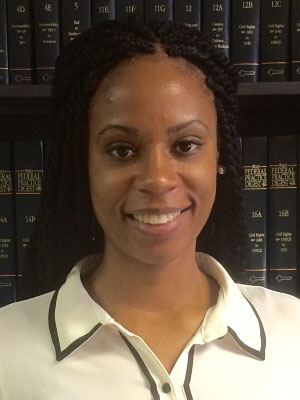
YLR: Could you describe the nature of your work at the ACLU-National Prison Project?
Jamelia Morgan: I help lead our research and advocacy on the use of solitary confinement on physically disabled prisoners. This is a population that is often marginalized in prisons and jails. Although data on the exact numbers of individuals in prisons and jails is difficult to locate, estimates indicate that as many as 26 percent of state prisoners report possessing a hearing or visual impairment or physical disability. As the prison population ages, research indicates that the number of prisoners living with physical disabilities and chronic conditions will increase significantly. These problems in the general prison population are magnified in isolation. My fellowship project’s overarching goals are to formulate actions to stop the use of isolation on individuals with disabilities and prevent the use of this practice from expanding with proactive advocacy and public education—and possibly litigation.
In addition, I work on the NPP’s Stop Solitary campaign, which over the last five years has been working to end solitary confinement as a practice in federal and state prisons. I also work on other cases challenging unlawful conditions of confinement in state prisons.
YLR: How did your time at the Law School studying criminal law and being active in the Liman program help shape your professional aspirations? How did your legal training prepare you for facing these issues in the real world?
Morgan: In large part, my current work is informed by my participation in the Liman Program (the colloquium in particular) as well as my participation in the Detention and Human Rights Clinic. Both the Liman Program and the Detention Clinic provided me with practical legal training in the field of prisoner’s rights—exposing me to the relevant law, thought-provoking scholarship, and day-to-day rules and regulations governing prisons. Through my legal training and experiences in law school, I came to learn more about the terrible suffering imposed upon prisoners held in solitary confinement, and I became motivated to find some way to get involved with the movement to end the horrible practice.
YLR: From your time as a student to today as Liman fellow, do you feel that the work happening at Yale Law School is impacting the national conversation around criminal justice reform?
Morgan: Certainly. President Obama’s historic op-ed in the Washington Post called for an outright ban on solitary confinement for youth, and adopted recommendations promulgated by the Department of Justice to address the overuse of solitary confinement in the federal prison system. In his op-ed, President Obama made express reference to Time-In-Cell, a report produced in 2015 by the Liman Program and the Association of State Correctional Administrators (ASCA). That report, as well as a 2013 report on Administrative Segregation, has played an important role in framing the conversation on solitary confinement by providing the essential data to provide both an accurate picture of the practice nation-wide and clear estimates on the scope of the problem—that is, the number of individuals subjected to the practice. These reports would not have been possible without the partnership between the Liman Program and the ASCA program, whose joint efforts to tackle and understand the contours of solitary confinement as a practice have served as a catalyst for greater calls for reform.
Janis McDonald ’88 LLM
Professor of Law, Syracuse University College of Law; Co-Founder and Co-Director of the Cold Case Justice Initiative (CCJI).
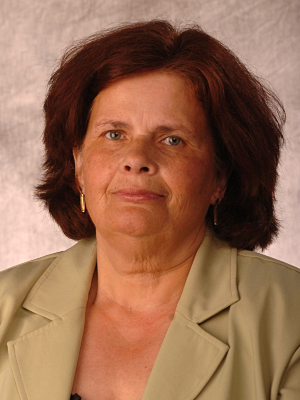
[Credit] Syracuse University Photo By Steve Sartori
YLR: Could you describe some of the influences and inspirations surrounding your co-founding of the Cold Case Justice Initiative in 2007?
Janis McDonald: There is nothing more powerful than being exposed directly to those families who have lost loved ones to deliberate and organized racist killings and who engaged in a fifty-year struggle for justice despite all of the neglect and refusals of law enforcement. I met the family of Frank Morris in Ferriday, Louisiana during my spring break in early 2007. I was researching for a different project and learned of the efforts of his granddaughter, Rosa Morris Williams who was twelve when he died and is engaged in efforts to secure a real investigation into his death. On the morning of December 10, 1964 two suspected members of the local KKK broke into Morris’s shoe repair shop. They poured gas over him and set him and his shop on fire. Morris’s ten-year-old grandson watched his grandfather, covered in flames, run out the back of the shop. Four days later, Mr. Morris died of third degree burns, which covered more than 90 percent of his body.
Although four separate witnesses surfaced as late as 2009 and admitted that they heard their relative admit to being one of those men who set the fire, the government refused to even ask for an indictment. That suspect died of cancer in 2014.
When others in that small community heard of our willingness to assist the Morris family in 2007, they, too, came forward with horrendous accounts of the disappearance and killings of their loved ones. What began as a genuine interest in helping one family became a recognition that no one has ever accounted for all of the people who disappeared or were killed due to deliberate, organized racist attacks.
That first year I quickly developed a course with Paula Johnson, a law professor and co-founder of CCJI, “Investigating and Reopening Civil Rights Murders.” Paula and I frequently visited Louisiana and Mississippi and confronted federal and local law enforcement with the evidence that we discovered. We met with the attorney general and his staff at the Department of Justice, the U.S. attorneys in the areas of the killings, and with local sheriffs, prosecutors, and potential witnesses all over the country. The more we were rejected, the more we were motivated to dig deeper. The Emmett Till Unsolved Civil Rights Crime Act signed into law by President George W. Bush in October 2008 appeared to provide the assistance the families needed; however that law, which will sunset in 2017 unless amended, has been a low priority for the Department of Justice and the FBI. The families experienced countless frustrations with the lack of action by the government and we have attempted to modify and enhance the law to gain oversight and improved implementation to ensure that it is not another false promise. A Reauthorization Act, introduced in both the U.S. House and Senate on April 26, 2016, represents another one of our efforts to insist that the government and our legal system meet its obligations to all its citizens.
Our law students at Syracuse wanted to figure out ways to deal with a legal system that failed hundreds of citizens; they were stunned at a history they did not know; and they were consumed with the lessons of passionate advocacy for an almost insurmountable cause. As educators we could not instill a better lesson for their future and for the future of the legal system. Our students have discovered almost ten thousand pages of unredacted FBI files, identified over three hundred victims not currently on the FBI’s list of unsolved civil rights era murders, and continue to receive information of civil rights-related racist killings from the more recent times not covered by the current legislation.
YLR: How would you describe the importance of your current scholarship, especially given the current political climate surrounding the relationship between race and the criminal justice system?
McDonald: As our work on CCJI has developed I am more and more convinced that it is critical to the future work of confronting the racism embedded in our criminal justice system, in the entire legal system, and in the social structures of society. Unhealed wounds keep surfacing. There is a desire by many to put the past behind us and to engage in a historical revisionism that minimizes the numbers and scope of domestic terrorism and horrendous killings of the past civil rights era. Our work is direct action to confront that revisionist effort.
The families of Medgar Evers and the three civil rights workers killed in Philadelphia, Mississippi in the 1964 Freedom Summer reached out to the mothers of Trayvon Martin and Michael Brown. As our students work on identifying other victims of racist killings from the 1950s and 1960s, they have realized the similarities in the types of violence by law enforcement and others against minorities in the current era. Many students report that they often forget whether they are addressing investigations of the 1960s or 2016. The families of today’s racist violence seek our help too. There is a continuum of racist action encouraged by a failure to seek accountability in the legal system.
YLR: How did your time at Yale Law School affect your current work?
McDonald: When I came to YLS I had already litigated for ten years, taught in a law school for three years, and worked hard as an activist in many arenas. My years at YLS represented an opportunity to reflect on all that work and what new influences might come my way. Professors Ackerman, Amar, Kahn, Koh, Fiss, and Calabresi worked their magic. As the single mother of an eleven month old, I helped to create the Yale Law School Early Learning Center—with my son, Ryan, as a founding child of the first class. Dean Calabresi often scooped Ryan up and sang Italian lullabies to him as he tried to race through the halls of the old Law School.
My greatest influence was the graduate students who came from all over the world to pursue their advanced degrees at Yale. Our long talks in the cafeteria remain lodged in my heart and in my ambition to connect my work with the similar efforts in other parts of the world to address terrorism and justice. I thought of them often when we took the CCJI issues to the United Nations Human Rights Council in Geneva last year when it was the United States’ turn for its universal periodic review of its human rights record.
Nola Heller ’04
Chief of the Violent and Organized Crime Unit at the United States Attorney’s Office for the Southern District of New York
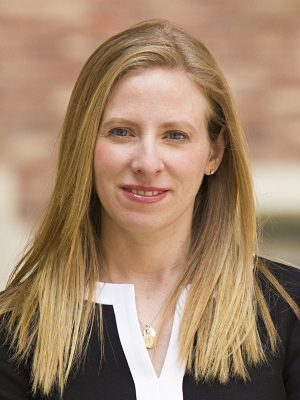
YLR: Can you briefly describe your role and work at the U.S. Attorney’s Office?
Nola Heller: I supervise about twenty senior AUSAs who investigate and prosecute cases against violent gang members, murderers, robbers, and organized crime figures. The work of our unit focuses on finding areas in our district that have experienced surges in violent crime, targeting those areas, and bringing cases that help make those communities safer. In April 2016, prosecutors in our unit charged and took down the largest gangs case in New York City history—120 defendants. The next day, TV cameras captured kids returning to play on the playgrounds that the gangs we dismantled had dominated for years. That’s what my job is all about: making New York a safer place, and taking the most dangerous criminals in the country off the streets.
Every day I meet with agents and supervisors from our partner law enforcement agencies—primarily the FBI, DEA, ATF, HSI, and NYPD—to discuss our current cases and take in new ones. One of my most challenging roles is to negotiate and interact with other prosecutors’ offices when we have overlapping investigations, which happens often.
YLR: What led you to pursue this career path?
Heller: In college, I thought I was going to be a journalist. I was a history major and really enjoyed the process of digging into a thorny issue or problem, researching it, and reporting it in hopes of generating a solution. I went to law school never truly intending on being a lawyer, but in my first semester Constitutional Law small group, I was assigned the role of an AUSA for our moot court project. The hypothetical involved the search of a hotel room for drugs and guns. From the moment I stood up to make my argument, I knew I wanted to become an AUSA. An AUSA’s mission to protect the public seemed to me to be the highest calling imaginable, and the investigatory side of an AUSA’s role appealed to the journalist in me. During my 1L summer, I interned at the U.S. Attorney’s Office for the Eastern District of New York (for Marshall Miller ’98), and got assigned to work on a lengthy murder trial. Marshall and his team allowed me to help prep a cooperating witness, sit at counsel table, and even examine an expert witness at the trial. It was the most thrilling and satisfying professional experience I had had to date. I was hooked.
YLR: How did your time at Yale Law School studying criminal law and being active in clinics and the programs help shape your professional aspirations? And how did your legal training prepare you for facing these issues in the real world?
Heller: Once I figured out I wanted to be a prosecutor, I took every criminal law class that was available at the Law School. My favorite class by far was Federal Criminal Prosecutions, taught by Kate Stith and David Fein. They took us through the principles that guide federal prosecutors, the nuts and bolts of how the job works, and case studies on some of the biggest prosecutions of that time, including Enron. That class in particular prepared me especially well for my work at SDNY. I spent a lot of time working with and then directing the Temporary Restraining Order Project, which involved extensive work with victims. I knew I wanted to continue doing that as well. I participated in Barrister’s Union, which gave me a taste of the type of oral advocacy I would be doing on a daily basis as an AUSA. Lastly, although it might not seem likely, my work as Managing Editor of the Yale Law Journal was extremely helpful in preparing for my life as an AUSA; we worked in teams to produce something complex and multifaceted, which is actually similar in many ways to the work that goes into preparing a big case or a trial.
YLR: Do you feel that the work happening at Yale Law School through clinics, coursework, and centers and programs has a broader impact on the work surrounding criminal justice reform nationwide?
Heller: The ideas that get generated at YLS have an impact on so many areas in the legal world. We’ve seen a lot of changes in our sentencing guidelines over recent years, especially in how we treat low-level narcotics offenders. Discussions in the academy about mass incarceration and its effect on the populace helped to bring about those positive changes. The forums and discussions that take place every day in the halls of YLS are the foundation for the policy changes that ultimately get made.
YLR: Before joining the USAO, you held two clerkships. How have those experiences influenced your understanding of the law now that you’re a U.S. Attorney?
Heller: My two years clerking—in the Southern District of New York for Hon. Michael B. Mukasey ’67 and on the Second Circuit for Hon. Reena Raggi—were formative experiences. My judges, who were both former AUSAs themselves, instilled in me the fundamental principles upon which I rely every day. First among them is that it isn’t about winning a particular case but doing the right thing. Sometimes that won’t mean getting the highest sentence or the biggest plea offer. Sometimes that will mean dismissing charges against a sympathetic defendant. Or sometimes it will mean pursuing a difficult case against a worthy target. My judges taught me to be guided by the overarching principles of fairness and equanimity, no matter the defendant or defense counsel. They also taught me how to conduct myself in court, how to treat my adversaries, and how to be a good supervisor and mentor. I will be forever grateful to them both.
Renagh O’Leary ’14
Attorney, Bronx Defenders
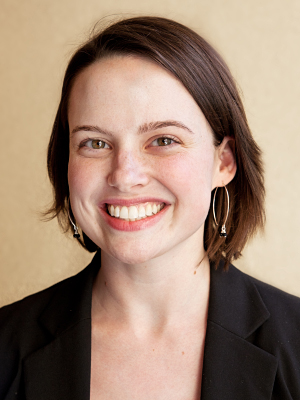
YLR: Could you describe the nature of your work at the Bronx Defenders?
Renagh O’Leary: As a public defender, I represent people charged with misdemeanors and felonies in state court. I represent my clients at every stage of their cases, from arraignment through trial, a plea, or dismissal. Though doing a trial or suppression hearing is certainly one of the most exciting parts of my job, negotiating a great plea bargain or litigating a motion to dismiss can be just as important.
I’m in court every day, but litigation is only one part of my role as a defense lawyer. Being arrested and charged with a crime wreaks havoc on someone’s life. Because of their criminal cases, my clients are often at risk of losing their housing, their children, their job, or their immigration status. The Bronx Defenders has pioneered a holistic model for public defense work through which we help clients address the full range of challenges created by a criminal case. In addition to representing clients on their criminal cases, I work closely with other attorneys, social workers, and advocates to address the collateral issues my clients confront.
YLR: What makes you so passionate about the work that you are doing?
O’Leary: Public defenders stand with our clients on the front lines of the fight against a broken criminal justice system. I witness the cruelty, racism, and fundamental unfairness of the criminal justice system every day. Too often, my clients are punished for being poor, for being people of color, or for being mentally ill. At the same time, I am inspired by my clients’ resilience and bravery in confronting a deeply unjust system.
YLR: How did your experience working in the Criminal Justice Clinic prepare you for your current career?
O’Leary: As a clinical student in the Criminal Justice Clinic (CJC), I represented people charged with misdemeanors in New Haven’s lower state court. My clinic partner and I represented two clients at a time on their pending cases. We advocated for our clients’ release at arraignments, conducted investigations, negotiated with judges and prosecutors, and counseled our clients, all under Professor Doherty’s careful guidance. The most important thing I learned in CJC was to be a reflective and self-critical advocate. The path of a client’s case can be shaped by a million small decisions, and it’s important to think through every one of them.
Sia Sanneh ’07
Attorney, the Equal Justice Initiative
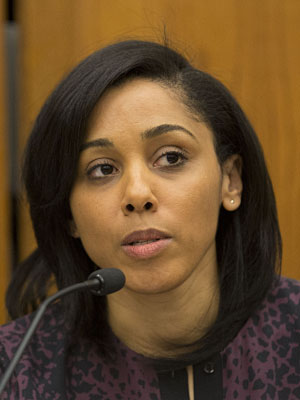
YLR: What is the nature of your work at the Equal Justice Initiative?
Sia Sanneh: At EJI, I work in each of our project areas, all of which are related to ensuring that poor people and people of color receive fair and just treatment in the criminal system. A lot of this work involves providing free criminal representation to clients who are trapped in the system, whose trials were infected with racial bias or prosecutorial misconduct, and who cannot afford to hire legal counsel. This includes the folks on death row: Alabama has no state-wide public defender and is also the only state in the country without a state-funded program to provide legal assistance to death row prisoners. So there is a tremendous need for legal representation, and for more than twenty-five years EJI has been trying to help the men and women who are facing execution and desperately seeking legal help.
More recently, we began a campaign to change the way kids are treated in our criminal justice system. We were working with kids who had been sentenced to death before the U.S. Supreme Court abolished this practice, and we also started working with young teenagers—some as young as thirteen—who had been tried as adults, and sentenced to die in prison. We wanted to challenge these incredibly harsh punishments, and after several years of litigation in state courts throughout the South and elsewhere, we won a couple of cases at the U.S. Supreme Court including Graham v. Florida (2010) and Miller v. Alabama (2012), which abolished mandatory life sentences for children.
Finally, I am also involved with EJI’s newest race and poverty project. We believe there are deep historical roots to the unjust and racially discriminatory policies that have made mass imprisonment a crisis in so many communities of color. So we are developing a series of education and community outreach projects designed to document the history of racial injustice in the Deep South and beyond, and to explain the connection between our history and the contemporary challenges we are facing, especially in the criminal justice system.
YLR: What makes you so passionate about the work you are doing?
Sanneh: It is a privilege to represent our clients. These men, women, and kids show tremendous bravery and humanity in the face of extraordinary challenges. I’ve worked with clients who were executed, and I have experienced their strength and compassion in the face of a system that is cruel and absurd. To be in proximity to that kind of courage inspires me to do more for all of our clients. Everybody deserves fair treatment in our system, and you have no chance at that without a lawyer who is willing to fight for you.
One of EJI’s long-time clients, Anthony Ray Hinton, spent thirty years on Alabama’s death row for crimes he did not commit before he was exonerated and finally left prison last year. Our team, led by Bryan Stevenson, spent fifteen years fighting for his release, and we lost in every court in Alabama before the U.S. Supreme Court finally intervened and set the stage for Mr. Hinton’s release. Mr. Hinton is now working with us to advocate for reforms to the system that kidnapped him and stole thirty years of his life. Mr. Hinton talks passionately about racism and the fact that but for being born African American and poor, this horrific ordeal would not have been forced upon him. But he also speaks about forgiveness and faith, and does so with a sense of humor and selflessness that is both remarkable and really inspiring and makes me want to work even harder on these issues.
YLR: How did your legal training—including your time at the Law School—prepare you for pursuing your professional aspirations?
Sanneh: Judith Resnik was my Civil Procedure professor, and reading about the Texas Prison Litigation in her class was the first time I thought I hadn’t made a huge mistake by coming to law school. I ended up becoming her teaching assistant for that class and later on, as Senior Liman Fellow in Residence, co-taught classes with her, and have learned a tremendous amount from her over the years about how procedures can create and perpetuate injustice. During my first year I also joined the Lowenstein Clinic, led by Professor Jim Silk ’89. He encouraged my interest in prison and criminal justice work, and helped me find human rights projects I could do in the clinic along these lines—access to medicine in South African prisons, a report on the criminal justice system in Zambia, an investigation into zero tolerance policies in schools in the United States—projects that kept me engaged in law school. And finally, I took Steve Bright’s class on capital punishment during my second year, and that changed my life. I started to see the depth of the problems in the criminal system and in the South in particular, and to believe not only that lawyers could make a difference but that we all have an obligation to ensure that the system works for everyone, not just the wealthy.
YLR: Can you discuss the nature of your work as a Liman Fellow, as well as your role now as a visiting lecturer in the Capital Punishment Clinic?
Sanneh: Capital work requires incredible care and attention to detail. The appellate system is full of traps and landmines—deadlines, procedures, and requirements that lawyers are responsible for. Any mistake can cost a client his or her life. Our system should not operate that way, and EJI is pushing to change it, but that is the system we have now and it requires great skill and care. Lawyers must possess substantive knowledge of several areas of law, including procedure, criminal law, evidence, and constitutional law—all of which we touch on in the Clinic. It’s also a system that is organized around protecting convictions, even ones like Mr. Hinton’s that were unfairly obtained after perfunctory trials. So the Clinic really prioritizes legal research skills, and making sure students are equipped to do exhaustive and thorough research in very complicated areas of law. But perhaps most importantly, capital defense lawyers need to be really strategic about how they present arguments. The clients and their stories need to be presented in a really careful and thoughtful way, so we work on those written and oral skills as well.
I also try to share with students some of the ideas that motivate me and all of us at EJI. We believe that everyone is more than the worst thing they have ever done. That if you lie you are not just a liar, that even if you kill someone you are more than a killer. Even when people are convicted of a crime, they posses a humanity and dignity that must be acknowledged.
And finally, I think being responsible for a client’s life is really humbling. It’s not about you. And I think for students in law school that humility is a really important concept to internalize.
A. T. Wall ’80
Director, Rhode Island Department of Corrections
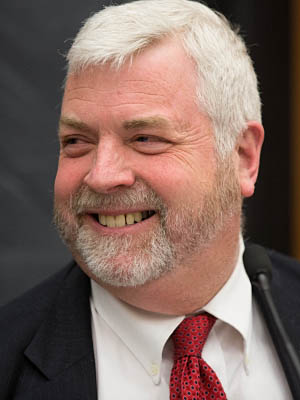
YLR: Could you briefly describe the nature of your work?
A. T. Wall: As director of the Rhode Island Department of Corrections, I am the chief executive officer for an agency that covers all aspects of a statewide adult correctional system. Its components include Rhode Island’s prisons, jails, probation, parole, and home confinement. We have more than fifteen thousand admissions into our institutions every year and on any given day twenty-four thousand people (one in every twenty-one men in the state) under community supervision. Reporting directly to Governor Gina Raimondo ’98, I set correctional policy and bear responsibility for every facet of the DOC’s operations. Departmental headquarters are co-located with all our correctional facilities and also our largest probation and parole offices. Their proximity allows me to interact with staff and offenders on a daily basis. I’ve been with our corrections department going on thirty years and am in my seventeenth as its head, a tenure that renders me the nation’s longest serving director of corrections.
YLR: How did your time at Yale Law School and your continued connection to the school help prepare you for the field you are now in?
Wall: My career in corrections began via a summer internship following my junior year at Yale College. It was during the early 1970s, a time when foundations were funding opportunities for students to intern in state and local government. I was fortunate to be selected. When I met with the program’s director about a placement I explained that because I did a lot of research and writing in my academic courses, I was hoping for something more action-oriented. I also mentioned my enthusiasm for criminal justice. I will be forever grateful that she heeded my request by arranging for my placement at a probation office for the state of Connecticut, conveniently located in the city of New Haven. It launched my career in corrections. One of the more senior officers mentored me and provided supervision while I worked with adolescent probationers, a logical choice since I was barely twenty-one years old at the time. I continued to work there part time during my senior year and was eventually offered a full-time position. Because of the age of my clientele, I was granted an invaluable window into the social determinants of offending, among them poverty, failure in school, violence in the home, trauma and abuse histories, and parents overwhelmed by their own problems. Although I have worked with adult offenders for most of my career I remain ever mindful of how deeply the roots of criminal behavior can lie.
It became apparent to me that I wanted to stay in the profession, rising to a level where I could have a greater influence on policy and practice. Yale Law School, with its broad-minded approach to the law was the ideal venue for me. The opportunities and faculty support afforded students who seek to pursue their own interests at the intersection of law and policy was a great gift to me. I took full advantage of the space and freedom I was given to explore not only the legal, but also the philosophical, political, ethical, and sociological context of the corrections profession. My experience at Yale Law School has been tremendously important, grounding me in a thoughtful and progressive approach to correctional policy.
YLR: You have had a varied career—starting as a probation officer, serving as a prosecutor, and working at the Vera Institute of Justice. How has serving in these various roles helped shape your perception of the criminal justice system?
Wall: Each job has shaped my perceptions of the criminal justice system in different ways. As a probation officer I came to appreciate the degree to which social stratification and marginalization influence criminal behavior and the difficulty in overcoming these barriers to healthy, productive, and law-abiding lives. While my stint as a prosecutor helped to establish my bona fides as a practicing lawyer, it reinforced my frustrations with an approach that focuses on individual cases without a concomitant emphasis on the larger issues of criminal justice policy. At the Vera Institute of Justice, I served as director of a sentencing project to provide alternative sanctions for chronic low-level offenders convicted in the Manhattan Criminal Courts. Support services were available to help participants complete their sentences. It was a promising program that offered a practical and less costly approach to dealing with individuals who would otherwise churn repeatedly through the city jails. I came to believe that unless the concepts were fully integrated into and owned by the system its impact on change would be too limited. These experiences reinforced my belief that criminal justice reform requires a partnership between creative advocates who press to keep the bureaucracy accountable for its practices, policies, and decisions and those within the system who by virtue of their seats at the table can implement changes that will last.
YLR: Do you feel that the work happening at Yale Law School has and continues to have an impact on the broader national conversation about criminal justice reform?
Wall: Speaking from my perspective as a career corrections practitioner, there is no question in my mind about the preeminent place Yale Law School holds in some of the most meaningful initiatives regarding reforms. Its willingness to collaborate with those of us in the field, its transparency about methods and goals and its respect for the practical challenges faced by leaders of corrections agencies has earned our confidence and buy-in. It is a very effective model for implementing change.